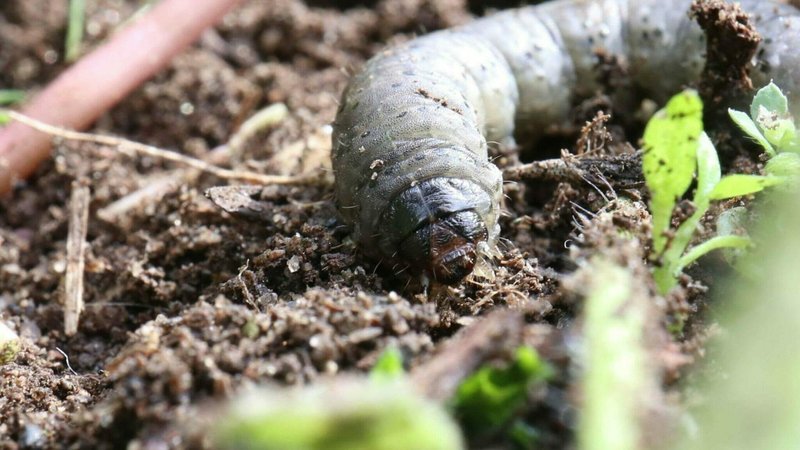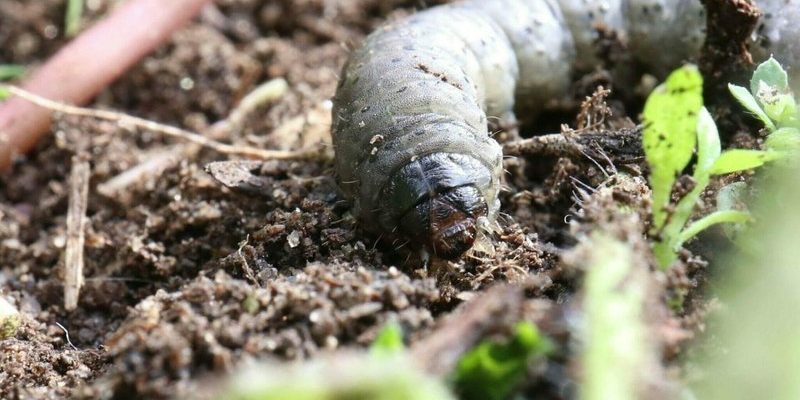
Think of grub worms like tiny ninjas of the underground world. They sneak around, munching on the roots of your grass while you’re busy enjoying your backyard. Recognizing the early signs of their presence is crucial to saving your lawn from becoming their buffet. This article will help you identify those warning signs and arm you with knowledge to tackle the issue head-on.
What Are Grub Worms?
Grub worms are the larvae of several species of beetles, with the most common being the **Japanese beetle**. These little creatures are usually white or cream-colored, with a distinctive C-shape when curled up. While they may not seem intimidating, they can be a gardener’s worst nightmare.
Why are they so troublesome? Grub worms feed on the roots of grass, which can lead to brown patches in your lawn. It’s like pulling out the support beams of a house; without a strong root system, your grass just can’t thrive. If left unchecked, a grub infestation can lead to significant damage that may require reseeding or extensive lawn repair.
Early Signs of Grub Worm Infestation
Catching grub worms early can make all the difference. Here are some early signs that you should keep an eye out for:
- Browning Patches: If you notice small brown patches in your lawn, it could be the first indicator of grub worms. Grass starts to wilt and die when it can’t get enough nutrients.
- Soft or Spongy Soil: If the soil feels unusually soft when you walk on it, this could indicate that the roots have been severed. You might even find your sod lifting easily from the ground.
- Increased Wildlife Activity: If you start seeing more birds, skunks, or raccoons in your yard, they could be hunting for those tasty grubs. It’s their way of giving you a heads-up!
Spotting these signs early gives you a fighting chance against a full-blown infestation.
How to Check for Grub Worms
If you suspect grubs are infiltrating your lawn, you’ll want to do a quick inspection. Here’s how:
1. **Get a Shovel or Trowel:** Start by digging a small section of sod about 1 square foot in size.
2. **Lift the Sod Gently:** You’ll want to lift the sod back like peeling an orange, exposing the soil underneath.
3. **Look for Grubs:** Check for those white, C-shaped larvae. If you find 10 or more in this small area, you might have a significant problem.
By doing this simple check, you can gauge the severity of the infestation.
Why Timing Matters
Knowing when to look for grub worms is just as important as recognizing the signs. Grub activity generally peaks in late summer to early fall, so that’s when you should be extra vigilant. During this time, they are actively feeding and growing.
If you act quickly when you notice early signs, you can often prevent severe damage. Think of it like catching a cold early: take care of it, and you might avoid a full-blown flu. Treating your lawn in late summer or early fall can save you a ton of time and hassle in the spring.
Effective Treatments for Grub Worms
Once you’ve confirmed the presence of grub worms, you have a few options for treatment. Here are some effective methods:
- Granular Insecticides: These can be spread across the lawn to target grubs. Look for products containing active ingredients like imidacloprid or chlorantraniliprole.
- Beneficial Nematodes: This natural solution involves introducing microscopic worms that prey on grubs. It’s like sending in your lawn’s secret agents!
- Natural Remedies: Some people swear by using soapy water to lure grubs to the surface. Mix a few tablespoons of dish soap in a gallon of water and pour it over affected areas.
Each method has its pros and cons, so consider your lawn’s needs before deciding.
Preventing Future Infestations
Once you’ve dealt with an infestation, prevention becomes key. Here’s how you can keep grub worms at bay:
1. **Maintain Healthy Grass:** Strong grass is less susceptible to grub damage. Regular watering, mowing, and fertilizing can keep your lawn in top shape.
2. **Aerate Your Lawn:** Aeration helps improve drainage and root growth, making your lawn less appealing to grubs.
3. **Use Preventative Treatments:** In the spring, apply a preventative insecticide to keep grubs from taking hold.
By following these simple prevention tips, you can minimize the chances of a future grub infestation.
Final Thoughts
In trying to keep your lawn looking its best, recognizing the early signs of grub worms is half the battle. From **browning patches** to soft soil, being aware can save you a lot of headaches down the road.
Remember, if you catch them early, you have plenty of treatment options at your disposal. And whether you decide to go the chemical route or opt for a more natural approach, the key takeaway is to stay vigilant. A little time spent checking your lawn can go a long way in preserving that perfect outdoor space you love. Happy gardening!

